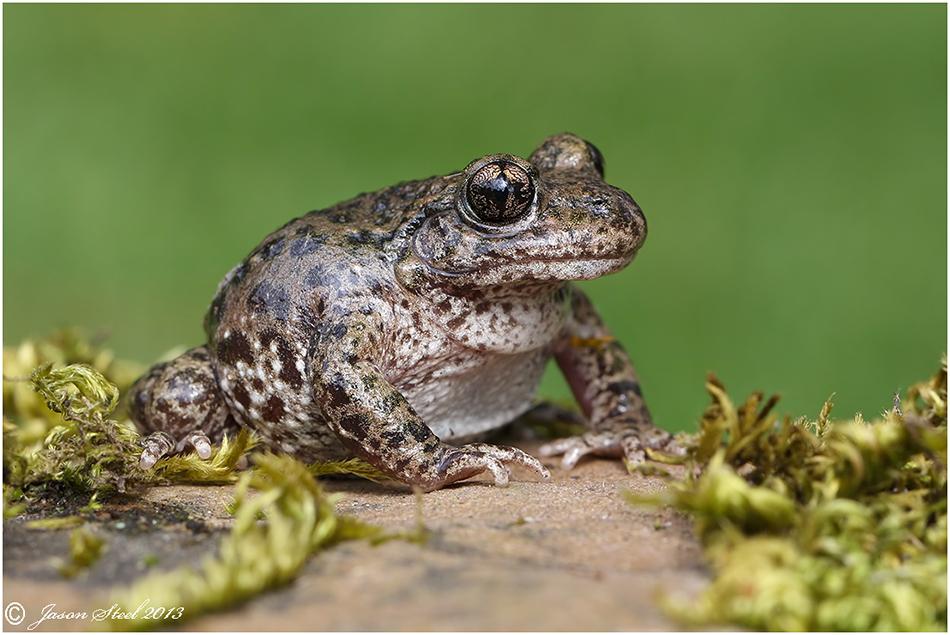
Midwife Toad (Alytes obstetricans)
The Midwife Toad is yet another alien species introduced to the UK from the European Mainland. It's a very small toad when compared to our native Common Toad and usually grows no bigger than 50mm in length with 40mm being the average size for an adult. There are various reports as to how the Midwife Toad came to the UK. It's likely that there have been several deliberate or accidental introductions of these toads. The most accepted theory is that the original introduction was back between 1898 - 1904 in Bedford and was the accidental result of a consignment of ferns and water plants brought over from Southern France by the nursery garden company "Horton & Smart" hiding unknown numbers of concealed toads amid the vegetation.
Their numbers quickly grew but they may have remained there were it not for WS Brocklehurst who introduced a dozen of these toads to his own pond in Bromham Road. His son Robert Brocklehurst later took some of his father's collection for his garden in Woodsetts near Worksop. Original source here
Since then the numbers of Midwife Toads have steadily increased and there have been many more deliberate introductions to other ponds in Bedfordshire villages and they have now spread cross most of north Bedford. Their are also smaller populations of these toads found at several sites in England and Wales.
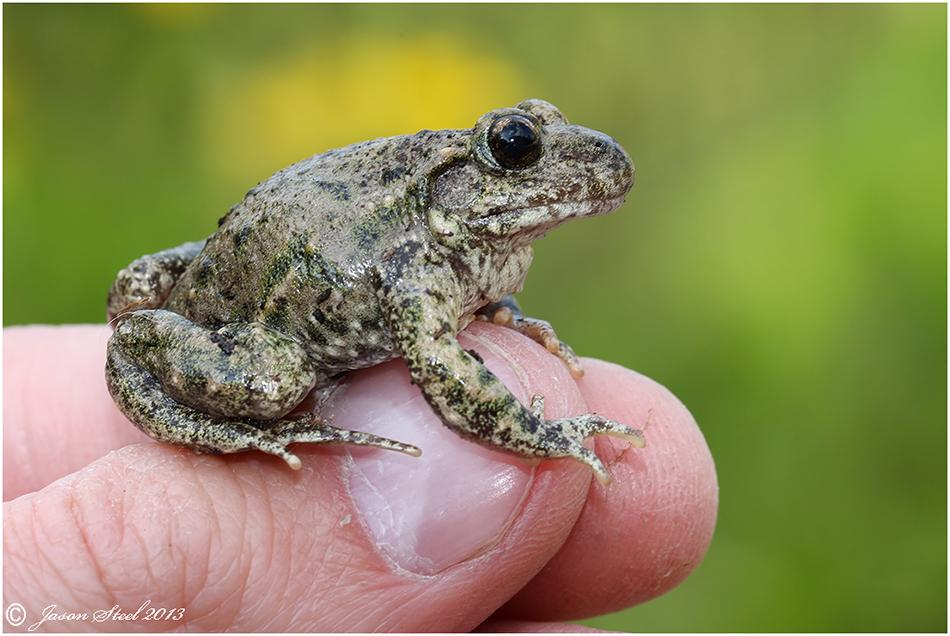
This image gives a good indication of just how small these toads are. Their skin is rough and warty and their colour can range from grey-olive green-reddish brown and the underside is usually lighter. The head is slightly more pointed than the Common Toad. One clear distinguishing feature of the Midwife Toad is its large eyes which have a vertical pupil like a cat. They also have a very distinctive call. It is a serious of monotone beeps. The electronic-sounding "beep . . . . beep . . . . beep" is comparable to that of a low-battery indication noise that you might hear from a household smoke detector or a car alarm.
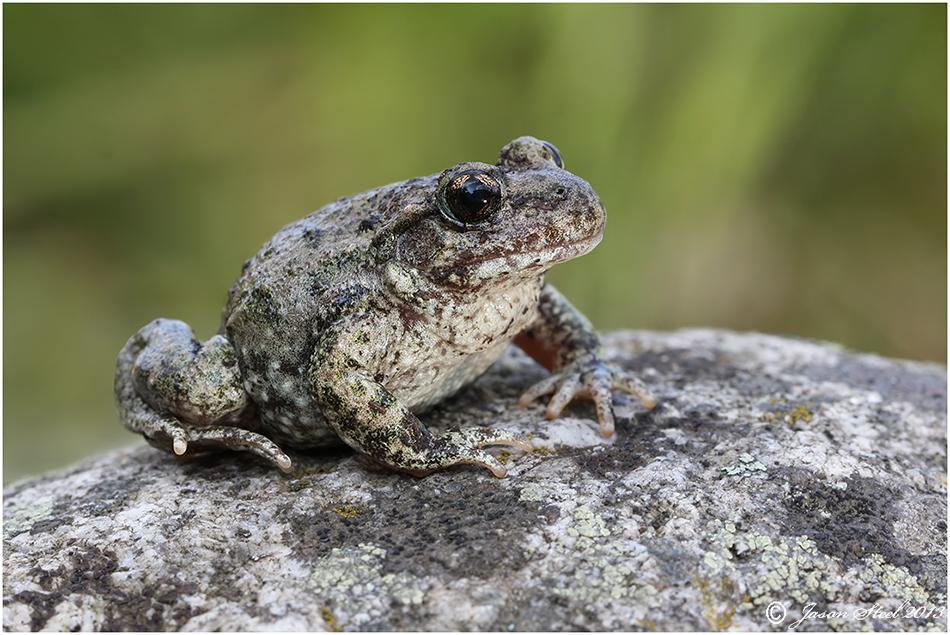
Midwife Toads can be very difficult to locate during the daytime where they prefer to stay hidden out of sight buried deep beneath loose sandy soil or tucked away in cracks and crevices of walls. They don't spend much time in water and are not often found in ponds as adults. They get their name from their peculiar mating habits. Unusually mating is done on dry land. The male will call out on warm nights to attract the attention of the females. Once mating is complete and the eggs have been fertilised (15-30 is typical) the male then wraps the string of fertilised eggs around his back legs and lower body. He will then carry these eggs around with him for about 3-6 weeks until they are ready to hatch. At this stage he looks for a shallow pond to release the eggs into. The eggs are large (3-5mm each) and yellow / white in colour. Under the safe protection of the male carrying the eggs there is a much higher success rate of each egg surviving long enough for a tadpole to hatch.
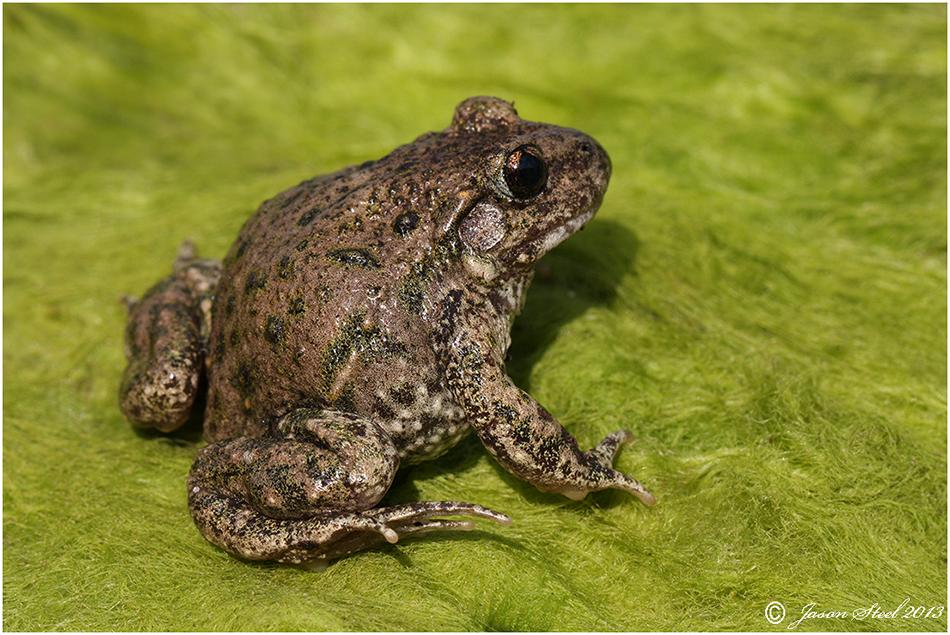
The female Midwife Toad may breed 2 or 3 times in a year. The males are even smaller than the females but despite the small size of the Midwife Toad, the tadpoles can grow to a very large size of up to 9cm. The tadpoles have a huge bulbous head and blunt-ended black spotty tails.
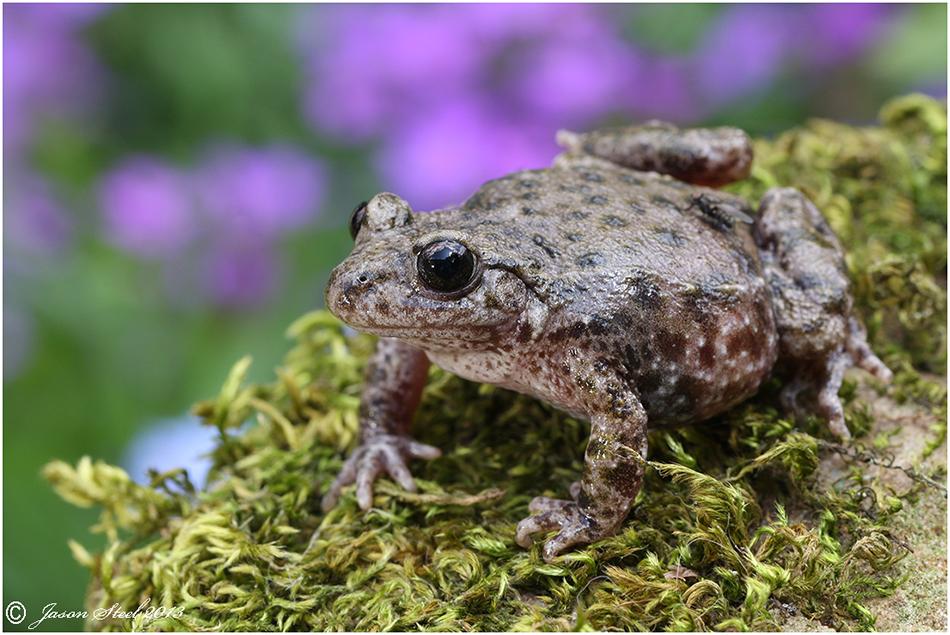
Midwife Toads are regular visitors to gardens if there are suitable places for the toads to hide during the daytime and suitable breeding ponds nearby in neighbouring gardens. At night their loud and persistent calls during the summer months can be the cause of many sleepless nights for local residents. The male toads call out to attract the attention of the females. If interested the females may reply with a similar "beep". The females are usually attracted to the males with the loudest and most persistent calls.
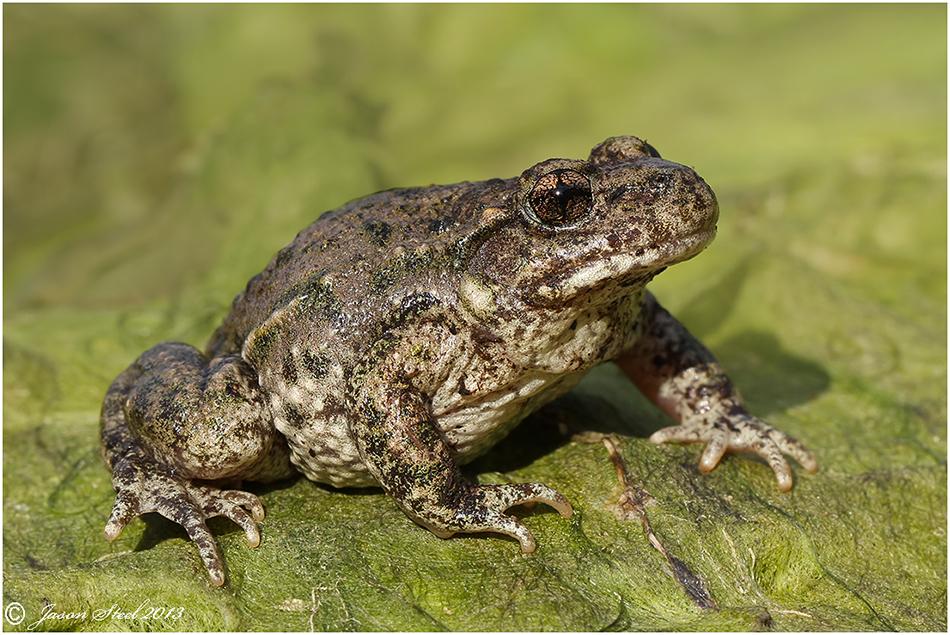
Midwife Toads can mate several times in a year. The female may produce up to three clutches of eggs per season. The male may mate with up to three different females and carry all three clutches of eggs around with him wrapped around his hind legs.
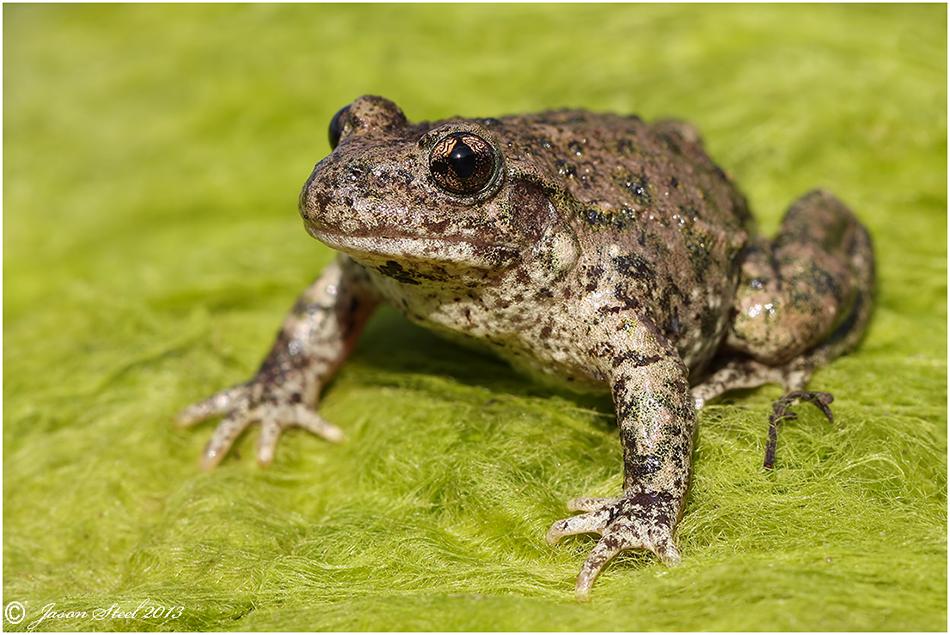
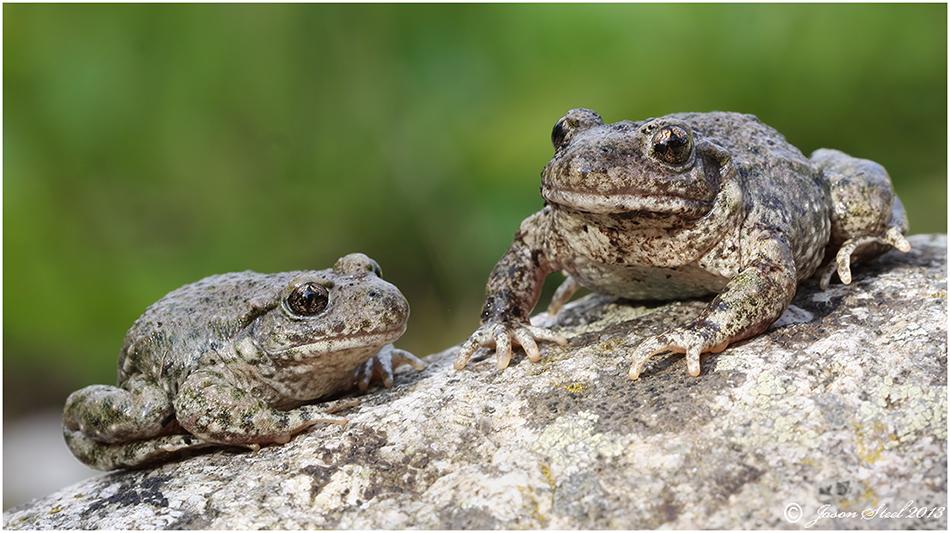
It is quite common to find small groups of Midwife Toads hiding together under the same rock.
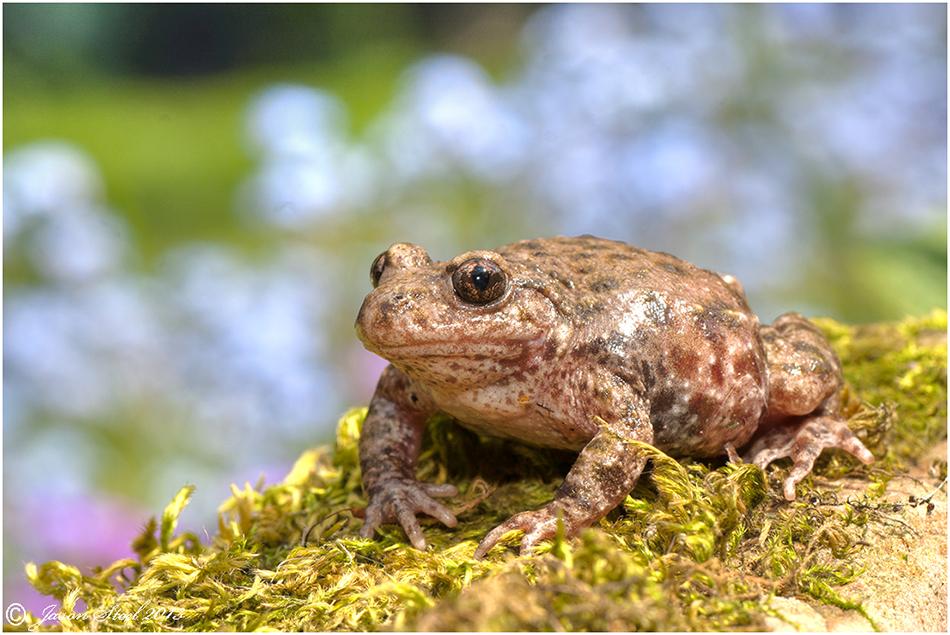
Like many toads the Midwife Toad's warty skin on their backs can secrete a foul smelling toxin when they feel threatened. This is a defence mechanism used to deter predators that may be put off from eating the toads. It is reported that this toxin has enough potency to kill an Adder in a matter of hours.
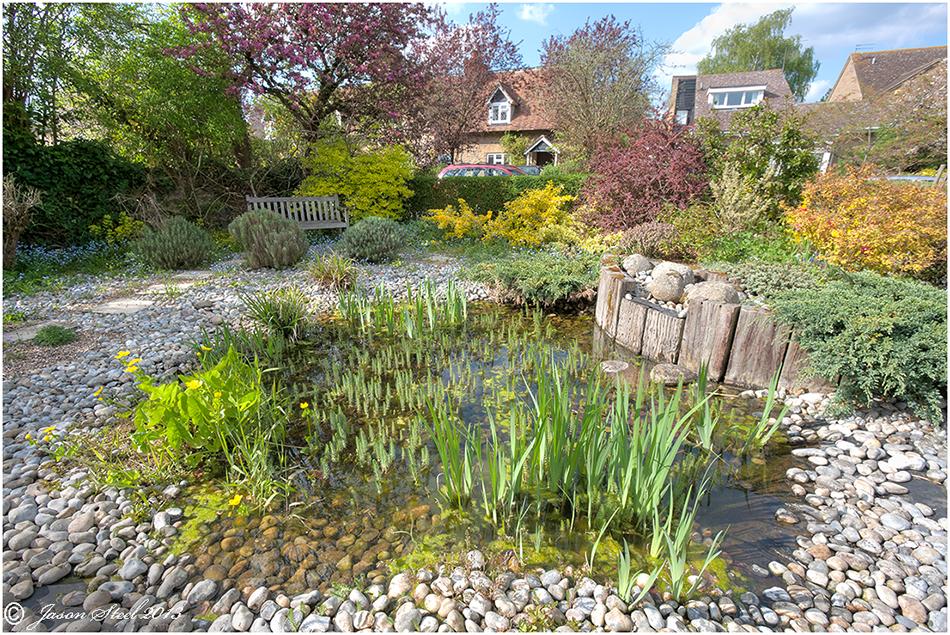
This photo shows a successful breeding pond for Midwife Toads in a village in Bedford. With shallow water, gently sloping sides and plenty of rocks and vegetation for the tadpoles to hide under this pond is ideal for Midwife Toads and the Smooth Newts that breed here.
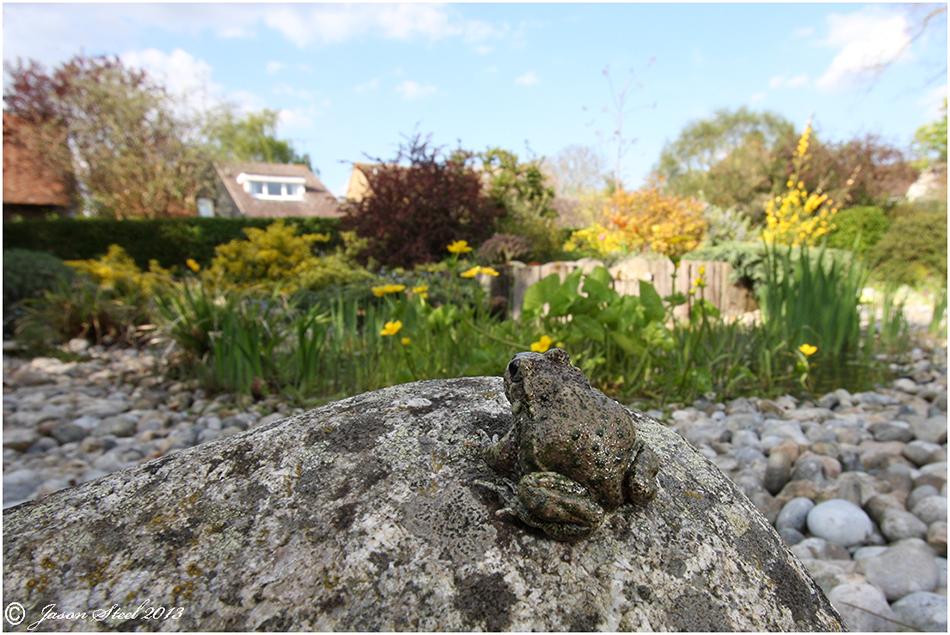
The tadpole stage is the only time that the Midwife Toads usually use ponds. It is not unusual for the tadpoles hatched later in the year to over-winter and may take some time before they are fully grown and ready to leave the pond. During this lengthy stay in the pond as tadpoles they grow to their considerable size. Soon after metamorphosing from tadpoles to toads they quickly disperse into the surrounding gardens.
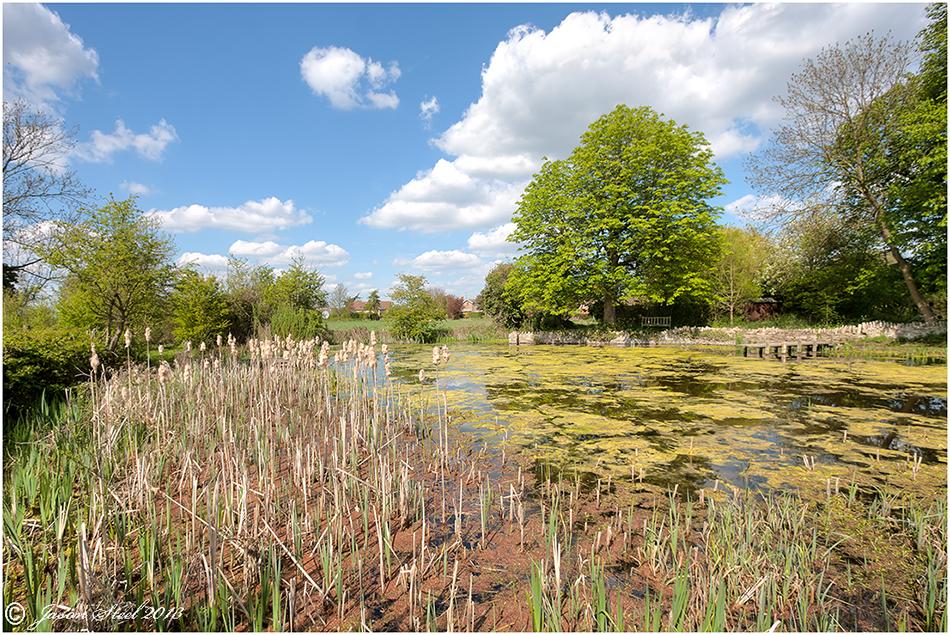
A larger village pond in Bedfordshire that supports Midwife Toads, Great Crested Newts and Grass Snakes.
Photographs on this page were taken using the Canon 40D camera and both the Canon 100mm 2.8L IS and Canon EF-S 10-22mm wide-angle lenses.